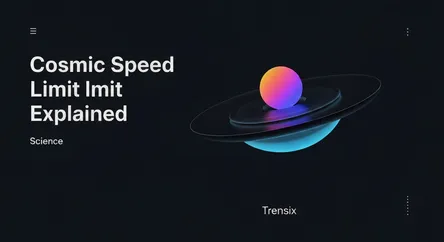Science
Cosmic Speed Limit Explained

Discover the ultimate cosmic speed limit. Learn what the speed of light is, why it's a constant, and its profound impact on our universe.
What is it?
The speed of light in a vacuum, commonly denoted by the letter 'c', is the universe's ultimate speed limit. It's the speed at which all massless particles and associated fields, including light, travel through empty space. This fundamental constant of nature is precisely 299,792,458 meters per second (about 186,282 miles per second). According to Albert Einstein's theory of special relativity, nothing with mass can ever reach this speed because it would require an infinite amount of energy. It's not just how fast light travels; it's a fundamental feature of the fabric of spacetime itself.
Why is it trending?
The speed of light is a constant topic in science, but it trends with new astronomical discoveries. Images from the James Webb Space Telescope, for instance, are essentially time machines; we see distant galaxies as they were billions of years ago because it took that long for their light to reach us. Furthermore, discussions in theoretical physics about concepts like warp drives or wormholes often resurface, reigniting public fascination with the idea of bypassing this cosmic speed limit, even if it remains firmly in the realm of science fiction.
How does it affect people?
Beyond theoretical physics, the speed of light has tangible effects. It dictates the communication delay with satellites and deep-space probes like the Mars rovers—a signal takes several minutes to travel between Earth and Mars. It's the foundation for technologies like GPS, which must account for relativistic effects. Philosophically, the finite speed of light shapes our entire perception of the cosmos, forcing us to understand that looking out at the stars is the same as looking back in time, revealing the immense scale and history of our universe.